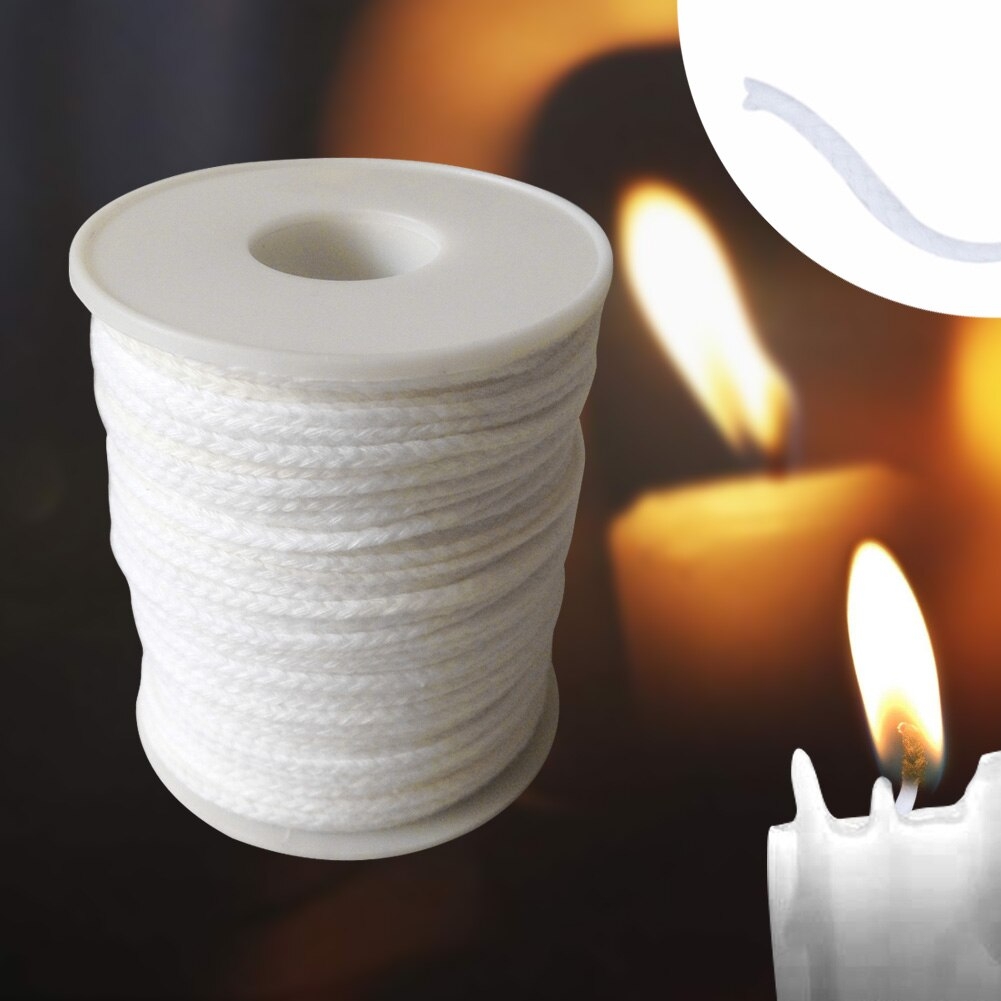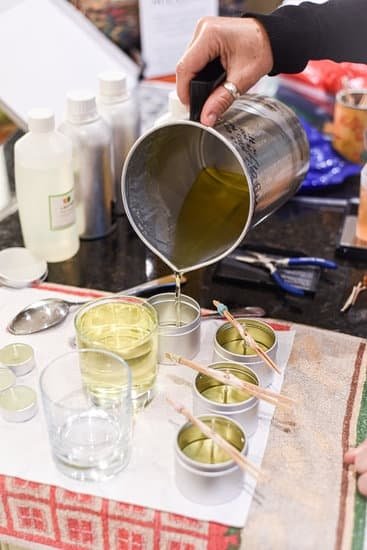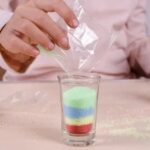The practice of making candles with essential oils has been gaining traction in recent years, as more people seek natural alternatives to synthetic fragrances. However, the question remains: is it safe to use essential oils in candle making? Essential oils have long been used for their therapeutic properties in aromatherapy and beauty products, and now they are making their way into candles for not only their aromatic benefits but also potential health advantages.
Essential oils are highly concentrated plant extracts that retain the natural fragrance and therapeutic properties of the plant from which they are derived. These versatile oils have been utilized in various ways, including in skincare routines, massage therapies, and even household cleaning products. The incorporation of essential oils in candle making adds another dimension to their usage, allowing individuals to enjoy the soothing scents and potential mood-boosting effects through candlelight.
While the idea of using essential oils in candles sounds appealing, there are important safety considerations to keep in mind. Skin irritation and allergic reactions are among the primary concerns when handling these potent oils.
Diluting essential oils properly in candle wax is crucial to avoid adverse skin reactions or overwhelming scents when the candles are burned. Additionally, ensuring that essential oils remain stable under heat and do not compromise air quality during combustion is paramount for creating a safe candle-making experience.
What Are Essential Oils
Essential oils have gained significant popularity in recent years for their therapeutic benefits and aromatic properties. These concentrated plant extracts are commonly used in aromatherapy to promote relaxation, improve mood, and alleviate stress. In addition to their role in holistic wellness practices, essential oils have also made their way into the beauty industry, being incorporated into skincare products for their potential skin-healing properties.
In the realm of candle making, essential oils have become a sought-after ingredient for adding natural fragrances to candles. Unlike synthetic fragrance oils that may contain harmful chemicals, essential oils offer a more natural and potentially safer alternative.
When properly used, essential oils can enhance the ambiance of a room while providing potential aromatherapy benefits. It is important to note that not all essential oils are suitable for use in candles, so it is crucial to research and select those that are safe for this purpose.
Benefits of Using Essential Oils in Candle Making
One of the key advantages of incorporating essential oils into candle making is the ability to customize scents according to personal preferences. Whether you prefer citrusy notes for an uplifting effect or floral scents for a calming atmosphere, essential oils offer a wide range of options to create unique candle blends.
Additionally, as natural plant extracts, essential oils may provide subtle therapeutic effects when diffused into the air through candle burning. This can contribute to creating a relaxing environment at home or during spa-like experiences.
How Essential Oils Interact With Candle Wax
Essential oils work differently from fragrance oils when blended with candle wax due to their volatile nature. While fragrance oils are specifically formulated for candle-making and tend to disperse more uniformly when mixed with wax, essential oils may evaporate quicker during the candle-making process.
This evaporation rate can impact the strength and longevity of the scent throw in candles, requiring careful consideration when determining appropriate oil concentrations for optimal fragrance dispersion. By understanding how essential oils interact with candle wax, makers can achieve desired scent profiles while ensuring safe usage practices throughout the manufacturing process.
Safety Concerns
When it comes to incorporating essential oils into your candle making process, there are important safety concerns that need to be addressed to ensure the well-being of both the maker and the end-users. One of the primary concerns is skin irritation that may arise from direct contact with concentrated essential oils.
Essential oils are highly potent and can cause adverse reactions if not properly diluted. It is crucial to handle these oils with care and follow recommended guidelines for safe usage.
Dilution Methods
To mitigate the risk of skin irritation and allergic reactions, it is essential to dilute essential oils properly before adding them to your candle wax. Dilution not only helps in reducing the potency of the oil but also ensures a more even distribution throughout the wax.
There are various methods for diluting essential oils, such as using carrier oils like jojoba or coconut oil, or incorporating them into a fragrance mix designed specifically for candle making. By following dilution guidelines meticulously, you can create candles that are not only aromatic but also safe for use.
Patch Testing
Before committing to using a specific essential oil in your candle creations, it is advisable to conduct patch testing to check for any potential allergic reactions. Apply a small amount of diluted oil on a patch of skin (like on the inside of your wrist) and monitor for any redness, itching, or irritation over 24 hours.
This simple test can help identify any sensitivities you may have and prevent adverse effects when handling candles scented with essential oils later on. Remember, safety always comes first when working with these powerful natural extracts.
Dilution Guidelines
When it comes to using essential oils in candle making, one of the most crucial aspects to consider is the proper dilution of these potent oils. Essential oils are highly concentrated plant extracts that can be irritating or even harmful if not used correctly. Here are some guidelines to follow when diluting essential oils in candle wax to ensure safe usage:
- Choose a carrier oil: Before adding essential oils to your candle wax, it is important to choose a carrier oil that will help disperse the essential oils evenly throughout the wax. Some common carrier oils include coconut oil, soybean oil, or even olive oil.
- Follow recommended dilution ratios: Different essential oils have different dilution ratios depending on their potency and intended use. It is crucial to follow recommended guidelines for each specific essential oil to avoid skin irritation or other adverse reactions.
- Test before full production: Before mass-producing candles with a particular blend of essential oils, always do a small test batch first. This will allow you to evaluate the scent throw and ensure that the fragrance is not overpowering or causing any negative effects.
By following these dilution guidelines, you can enjoy the benefits of using essential oils in candle making without compromising safety. Remember that less is often more when it comes to working with these powerful plant extracts, so always err on the side of caution when creating your aromatic candles.
Overall, while using essential oils in candle making can add beautiful scents and potential therapeutic benefits to your creations, it is vital to handle them with care and respect their potency. Dilution guidelines are there for a reason – they help ensure that you can enjoy your scented candles safely without any negative repercussions. As long as you follow proper dilution methods and take precautions, incorporating essential oils into your candle-making process can be a rewarding and enjoyable experience.
Heat Stability
When it comes to incorporating essential oils into candle making, one important factor to consider is the heat stability of these aromatic compounds. Essential oils are volatile substances that can be sensitive to high temperatures, potentially affecting their therapeutic properties when used in candles. It is crucial to understand how heat can impact essential oils to ensure that you are getting the most out of their beneficial qualities.
To maintain the integrity and potency of essential oils in candle making, here are some key considerations regarding heat stability:
- Temperature Control: When adding essential oils to candle wax, it is essential to do so at a safe temperature. Exposing these oils to excessive heat during the melting process can cause them to lose their aroma and potential health benefits.
- Duration of Heat Exposure: Prolonged exposure to high temperatures can lead to the degradation of essential oils. It is advisable to minimize the time that essential oils are heated or exposed to heat throughout the candle-making process.
- Selection of Essential Oils: Some essential oils are more heat-stable than others. Certain oils may withstand higher temperatures without losing their therapeutic properties. It is advisable to research and choose essential oils that are suitable for candle making purposes.
By understanding how heat can impact essential oils, candle makers can create products that not only emit pleasant scents but also retain the potential health benefits associated with these natural extracts. Proper handling and consideration of heat stability when using essential oils in candles can help ensure a safe and effective end product for consumers.
Combustion Safety
When it comes to using essential oils in candle making, one of the crucial aspects to consider is the safety during combustion. While essential oils can add a beautiful aroma to candles when burned, there are some safety considerations to keep in mind.
One primary concern is the potential impact on indoor air quality when burning candles with essential oils. Some essential oils, when heated, can release volatile organic compounds (VOCs) into the air, which may lead to respiratory issues or aggravate existing conditions.
To ensure combustion safety when using essential oils in candle making, it is important to choose high-quality oils that are specifically labeled for candle making. Lower-quality or adulterated essential oils may contain impurities that can produce harmful byproducts when burned. Additionally, following proper dilution guidelines for incorporating essential oils into candle wax is essential. Overloading candles with undiluted essential oils can lead to increased emissions and potentially cause irritation to the respiratory system.
In order to minimize any potential negative impact on air quality, consider using natural alternatives for fragrance in candle making such as dried herbs, spices, or dried flowers. These alternatives not only add a lovely scent but also reduce the risk of VOC emissions during combustion. By being mindful of these safety considerations and choosing high-quality ingredients, you can enjoy beautifully scented candles without compromising indoor air quality or your well-being.
| Essential Oils | Air Quality Impact |
|---|---|
| High-quality oils | Minimize emission of harmful compounds |
| Adulterated oils | Potential release of impurities when burned |
Alternative Fragrance Options
Using essential oils in candle making has become increasingly popular due to their natural scents and potential aromatherapy benefits. However, safety concerns arise when incorporating essential oils into candles. One way to address these concerns is by considering alternative natural fragrance options for candle making that may be safer than essential oils.
While essential oils are derived from plants and have therapeutic properties, they can also cause skin irritation or allergic reactions if not properly diluted. This is why some candle makers opt for alternative natural fragrances such as dried flowers, herbs, or spices. These options not only add a unique touch to the candles but also reduce the risk of skin sensitivities that may occur with essential oil usage.
Additionally, some individuals may prefer the subtle scent of dried botanicals over the sometimes overpowering aroma of essential oils. By using alternative fragrance options in candle making, crafters can create beautifully scented candles without the worry of potential adverse reactions. Experimenting with different botanical combinations can result in one-of-a-kind candles that are both safe and delightful to use.
| Consideration | Benefits |
|---|---|
| Reduced Skin Sensitivities | Less risk of skin irritation or allergies compared to essential oils |
| Subtle Scent Profiles | Create unique candle scents that are not overpowering |
Final Thoughts
In conclusion, the use of essential oils in candle making has become increasingly popular due to the potential benefits they offer, such as aromatherapy and creating a tranquil atmosphere. However, there are important safety concerns that need to be considered before incorporating essential oils into candles.
Skin irritation and allergic reactions are common issues that can arise if essential oils are not properly diluted or if individuals have sensitivities to certain compounds present in the oils. Therefore, it is crucial to follow dilution guidelines and perform patch tests before using essential oils in candle making.
Another factor to take into account is the impact of heat on essential oils. Heat can potentially degrade the therapeutic properties of essential oils, affecting their effectiveness when used in candles. Additionally, combustion safety is a significant consideration when burning candles with essential oils, as this can have implications on indoor air quality. It is essential to ensure proper ventilation when using these candles to minimize any potential risks.
While there are alternative natural fragrance options available for candle making that may be safer than essential oils, such as dried herbs or spices, the decision ultimately comes down to personal preference and risk tolerance. As long as individuals take necessary precautions and educate themselves on the proper usage of essential oils in candle making, it can be done safely.
Overall, it is possible to incorporate essential oils into candle making practices safely as long as one is informed and diligent about following guidelines and best practices.
Frequently Asked Questions
What Essential Oils Are Safe to Burn in Candles?
When it comes to using essential oils in candles, it is important to choose ones that are safe for burning. Some popular choices include lavender, lemon, peppermint, and eucalyptus. These oils not only provide a pleasant aroma when burned but also offer therapeutic benefits.
Can You Use 100% Essential Oils in Candles?
While you can technically use 100% essential oils in candles, it is recommended to dilute them with a carrier oil such as coconut or soy wax. This helps prevent the oils from evaporating too quickly and ensures a more balanced scent throw when the candle is burned.
Is It Better to Use Fragrance Oil or Essential Oil for Candle Making?
When deciding between fragrance oil and essential oil for candle making, it ultimately depends on personal preference and the desired outcome. Fragrance oils tend to offer a wider range of scents and are often more affordable than essential oils.
On the other hand, essential oils are derived from plant sources and may offer additional aromatherapy benefits compared to synthetic fragrance oils. Ultimately, the choice between the two comes down to individual priorities and preferences in candle making.

Welcome to my candle making blog! In this blog, I will be sharing my tips and tricks for making candles. I will also be sharing some of my favorite recipes.





